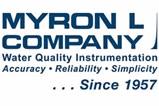The Basics: Monitoring Deionized Water

Years ago, high purity water was used only in limited applications. Today, deionized (Dl) water has become an essential ingredient in hundreds of applications including: medical, laboratory, pharmaceutical, cosmetics, electronics manufacturing, food processing, plating, countless industrial processes, and even the final rinse at the local car wash.
THE DEIONIZATION PROCESS
The vast majority of dissolved impurities in modern water supplies are ions such as calcium, sodium, chlorides, etc. The deionization process removes ions from water via ion exchange. Positively charged ions (cations) and negatively charged ions (anions) are exchanged for hydrogen (H+) and hydroxyl (OH-) ions, respectively, due to the resin's greater affinity for other ions. The ion exchange process occurs on the binding sites of the resin beads. Once depleted of exchange capacity, the resin bed is regenerated with concentrated acid and caustic which strips away accumulated ions through physical displacement, leaving hydrogen or hydroxyl ions in their place.
Get unlimited access to:
Enter your credentials below to log in. Not yet a member of Water Online? Subscribe today.
